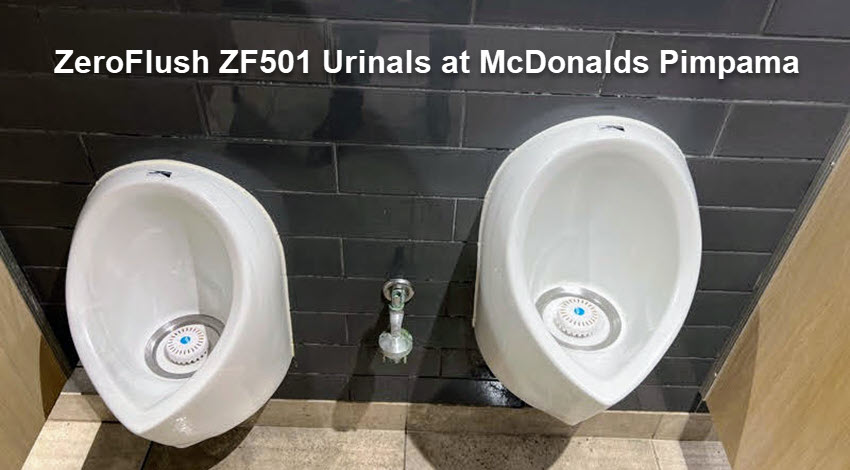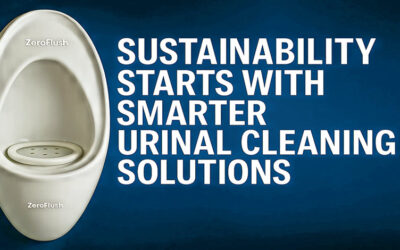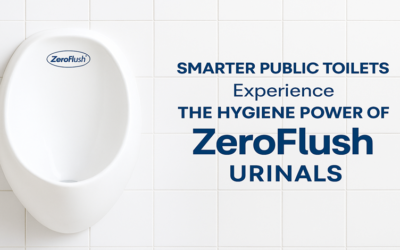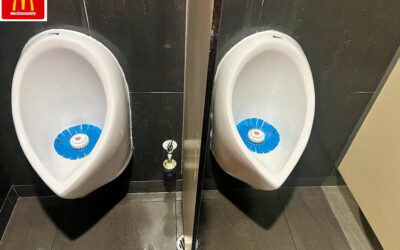In a world increasingly conscious of sustainability and the health implications of our choices, a rising trend in restroom facilities is garnering much-deserved attention: waterless urinals.
At first, the concept might sound unappealing to those accustomed to traditional, inefficient water-flushing urinals. But dive a bit deeper, and it becomes evident that this innovation offers immense health and water conservation benefits.
As our world becomes more attuned to the pressing needs of the environment and public health, the shift towards sustainable choices becomes not just preferable but essential.
Just as the automotive world is heralding the age of electric vehicles, it’s time for restrooms to champion the cause of waterless urinals.
Waterless Urinals vs. Water-Flushing Urinals: The Shift to Sustainability
In the modern era of sustainability and health-conscious decisions, the dialogue surrounding restroom facilities has started to echo the larger conversation on electric vehicles (EVs) versus petrol-powered vehicles.
Just as the automobile industry has seen a substantial pivot towards more environmentally friendly options, the restroom industry too is witnessing a similar transformation. This metamorphosis is well encapsulated in the growing popularity of waterless urinals.
The Electric Vehicle Analogy
When we compare waterless urinals to water-flushing urinals, the similarities with the transition from petrol-powered vehicles to electric vehicles become evident:
- Efficiency and Sustainability: Just as electric vehicles are celebrated for their zero emissions, waterless urinals stand out for their zero-water-waste feature. These innovations prioritise the conservation of resources, be it water or clean air.
- Economic Implications: Electric vehicles, over time, promise lower maintenance and fuel costs. Similarly, waterless urinals offer significant savings in the long run. Reduced water bills, lower maintenance costs, and the absence of electronic components to repair or replace make them a cost-effective choice for establishments.
- The shift in Perception: Initially, electric vehicles faced scepticism. Questions about their efficiency, range, and overall viability were rampant. Similarly, waterless urinals have had their share of misconceptions. However, perceptions are changing rapidly with increased awareness and firsthand positive experiences. Businesses and institutions are now recognising the tangible benefits of these healthy sustainable options.
The Health Advantage
- Reduction in Bacteria Spread: Unlike flushing urinals that can aerosolise bacteria and other pathogens into the air, waterless urinals are designed to operate without splashing or misting. This reduces the spread of germs in restroom environments, ensuring a cleaner and safer experience for users.
- Touch-free Experience: One of the key features of many waterless urinals is their hands-free operation. Without flush levers, buttons or sensors, users do not need to touch potentially contaminated surfaces, thus reducing the risk of germ transmission.
- Improved Air Quality: Conventional urinals often emit ammonia when the urine mixes with water. This can result in a pungent odour and poor air quality within restrooms. Waterless urinals use engineered urinal trap systems that traps odours, improving air quality.
- Lower Maintenance and Cleaner Facilities: Clogged pipes, overflow issues, and lime-scale buildup are common in traditional water-flushing urinals. In contrast, waterless urinals require less maintenance, are less prone to malfunctions, and ultimately contribute to cleaner restrooms.
The Sustainability Perspective
- Substantial Water Savings: The most obvious and significant benefit of waterless urinals is the tremendous amount of water they save. A traditional water-flushing urinal uses anywhere between 4 to 11 litres of water per flush. This translates to thousands of litres of water wasted annually in a commercial setting. By switching to a waterless solution, establishments can considerably save this precious resource, reducing their environmental footprint.
- Lower Energy and Carbon Footprint: Water treatment and delivery require energy. Waterless urinals indirectly reduce the energy used in treating and supplying water by conserving water. This, in turn, leads to reduced greenhouse gas emissions.
- Reduced Infrastructure Strain: The immense pressure on sewer systems and wastewater treatment plants is a significant concern in many urban areas. By their very nature, waterless urinals alleviate some of this pressure by reducing the volume of liquid waste entering the sewer system.
- Economic Savings: The upfront cost of installing waterless urinals to replace water-flushing urinals might be higher, but the long-term savings are substantial. Not only do businesses save on water bills, but they also cut down on maintenance costs. Over the years, these savings add up, making waterless urinals a cost-effective choice.
- Electronic Concerns: Even the most advanced touch-free water-flushing urinals rely on electronic sensors. While offering a touch-free experience, these sensors come with their challenges. They are expensive, need periodic maintenance, and eventually, replacement. The electronics embedded in these systems can malfunction, leading to water wastage, a stark contrast to the reliability and simplicity of waterless urinals.
- Every Major Urinal Manufacturer Is Onboard: Recognising the myriad benefits of waterless urinals, almost every leading urinal manufacturer now offers a waterless option alongside their traditional water-flushing models. This trend mirrors the automobile industry, where nearly every major car manufacturer now has an electric vehicle in their lineup, complementing their petrol-powered variants.
Zeroflush and The Way Forward
Companies like Zeroflush are leading the way in pioneering waterless urinal technologies that champion both health and sustainability. Their products are designed to be efficient and crafted with aesthetics and user experience in mind. This ensures that businesses do not have to compromise on design and user comfort when choosing a sustainable restroom solution.
Moreover, with the increasing emphasis on green building certifications and sustainable building practices, adopting waterless urinals can help establishments earn crucial points towards these certifications, making them more appealing and responsible in the eyes of consumers and stakeholders.
The Future of Hygiene: Embracing Waterless Urinals for a Healthier World
As our world becomes more attuned to the pressing needs of the environment and public health, the shift towards sustainable choices becomes not just preferable but essential. Just as the automotive world is heralding the age of electric vehicles, it’s time for restrooms to champion the cause of waterless urinals.
Once considered an oddity, waterless urinals are now emerging as the smart choice for modern establishments. Their health benefits and outstanding contribution to water sustainability make them an essential component of future-forward restroom design.
As global water scarcity becomes a pressing issue and our understanding of hygiene’s role in public health evolves, the case for waterless urinals becomes even more compelling. It’s time for businesses, public facilities, and individuals to embrace this change for our health and our planet.

Gary Mays, born and educated in Auckland, New Zealand, has called the Gold Coast, Queensland, Australia, home since 1986. Currently, the Executive Director at Whywait Plumbing Pty Ltd and Aquatemp Environmental Solutions Pty Ltd. He’s a licensed plumber with an impressive international business background in New Zealand, Australia, and Singapore. Gary is known for his vigorous advocacy in plumbing, water conservation, sustainability, and small business growth. He is an influential and forward-thinking leader, a frequent voice in modern media for his industry insights and deep dedication to ecological, environmental, and professional causes.





